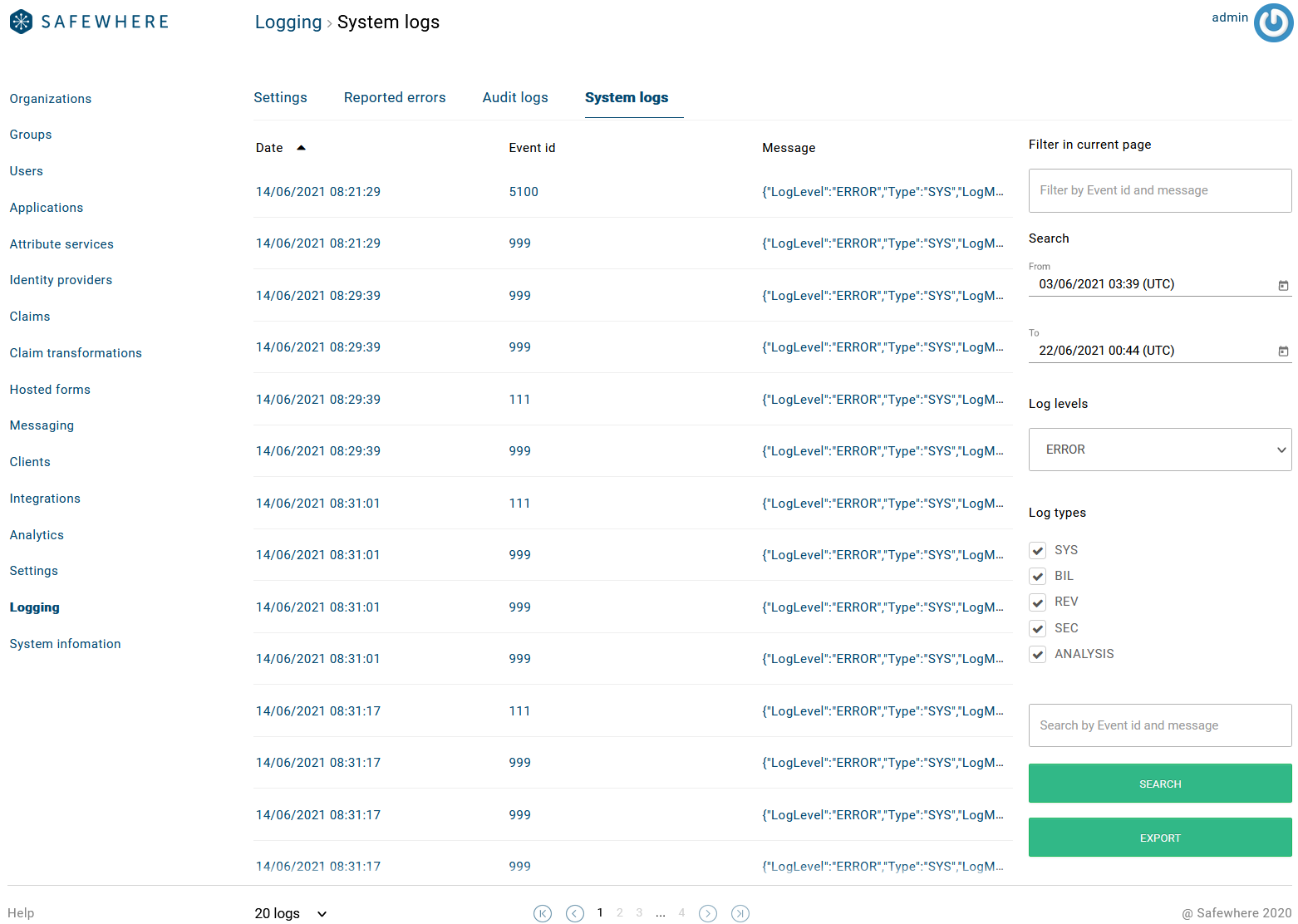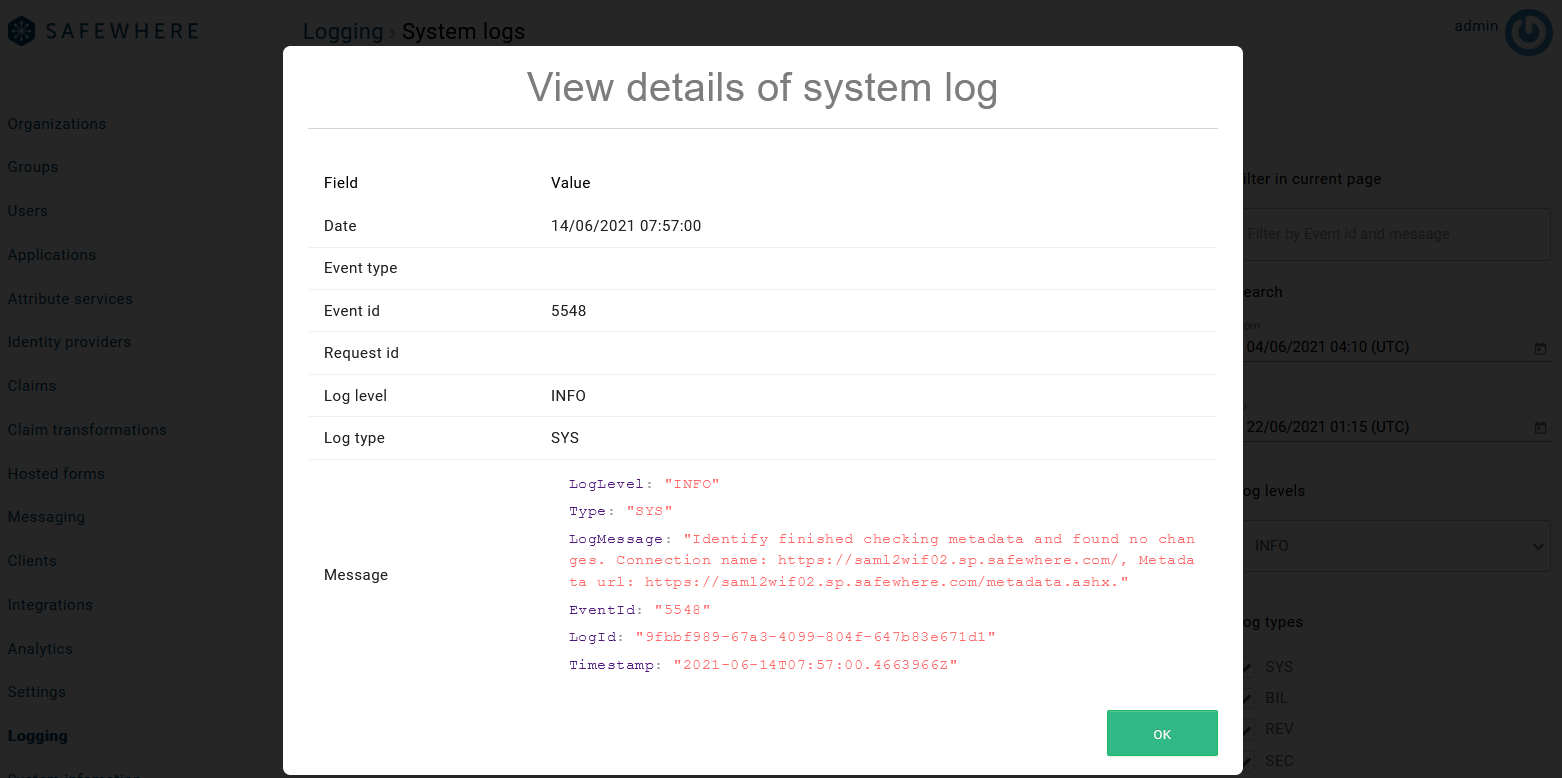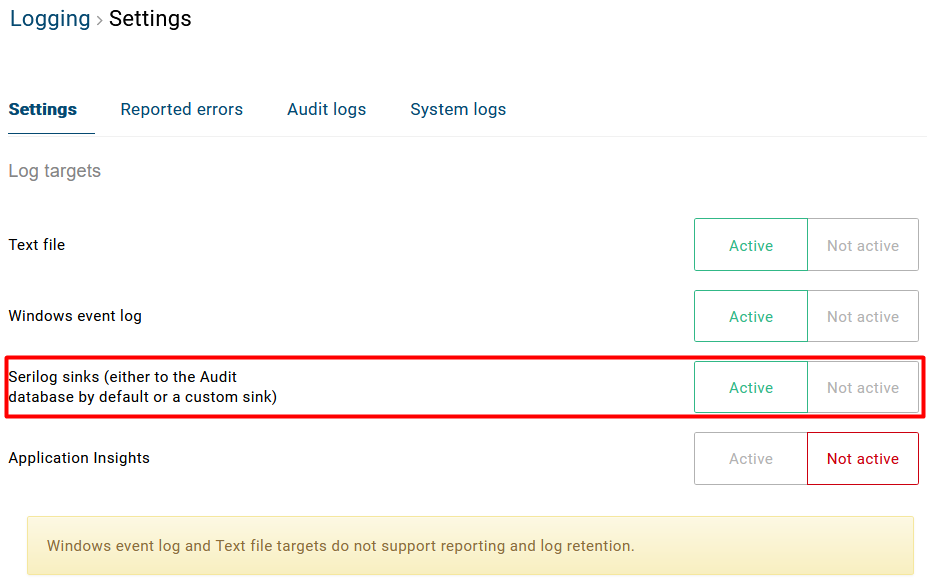System logs viewer
Introduction
The new System logs tab can display log entries of the types SYS, SEC, REV, etc. It only works for log data stored in an SQL Server database, MongoDB, or CosmosDB (aka query-able log stores). A great application of this new feature is that you can easily collect logs for troubleshooting purposes without having to RDP to the servers.

Supported features
Log data list
The log list shows system log records that meet the search query. You can click on a log record to see more details.

To ensure fast load time even when your Identify instance has a large amount of data, the default search criteria is by default set to a short time period. You can change the search dates in From or To as well as other criteria to get more data. See more detailed information below.
Filter and Search
The Filter feature allows you to filter log records that are displayed on the current list.
The Search feature allows you to specify criteria that are used to search for log records across the whole dataset (aka search through the database instead of the current list).
Log levels: Supported values are VERBOSE, INFO and ERROR. Please note that the comparison for log level is greater or equal. For example, when the selected value is:
- VERBOSE: All DEBUG, INFO, WARNING, and ERROR logs are returned.
- INFO: All INFO, WARNING, and ERROR logs are returned.
- ERROR: All ERROR logs are returned.
Log types: you can select SYS (System logs), BILL (Billing logs), REV (Revision logs), SEC (Security logs), and/or ANALYSIS (Analysis logs).
Export current log
You can click the EXPORT button to export all log records that meet your search criteria to a file. This feature is especially useful when you need to collect logs for the purposes of troubleshooting problems. The exported logs are in JSON structure so they are easy to view or import to other analysis tools and log storages.
Collect logs for troubleshooting
If your Identify instance is logging to SQL Server/MongoDB/CosmosDB by default, downloading logs is straightforward. However, if it is logging to Windows Event log or flat files, the System logs viewer cannot query data from these sources. If this is the case, you can follow the steps below:
- Precondition: Assuming that your Identify instance is logging to flat files.
- Go to the Logging tab and enable the option to log to SQL Server. Note that your instance will be logging to both flat files and SQL Server now. It is recommended that you set the log level to at least Information or Verbose.


- Wait for about two minutes for Identify to reload new settings.
- Perform the action that causes the issue that you want to troubleshoot.
- Go to the System logs tab and search for all log records that happened at the time you were reproducing the issue.
- Download logs.
- Revert all logging settings to the previous setup.